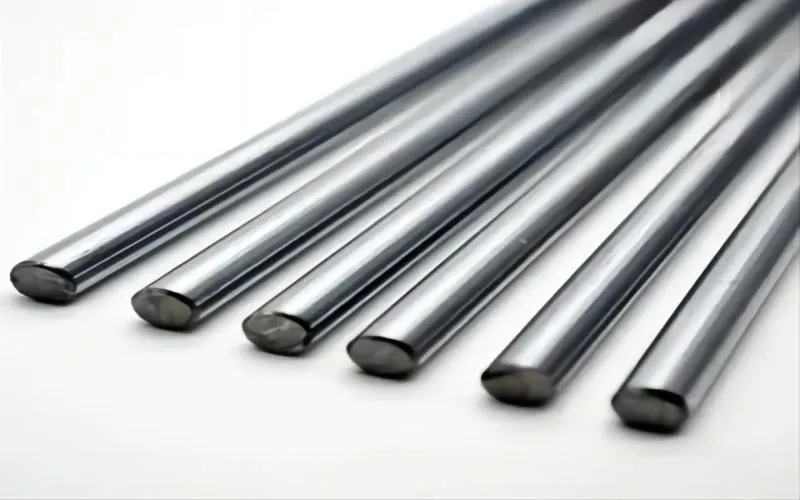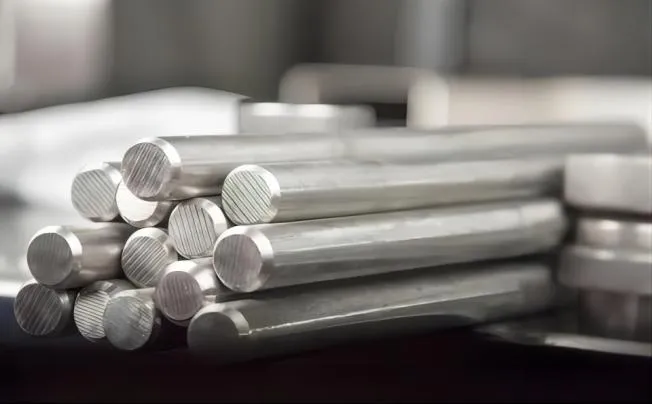What is a stainless steel rod?
A solid cylindrical stainless steel metal component, a stainless steel rod or bar, is a variant of this name. To accommodate a range of uses, it comes in a variety of sizes, shapes, and grades.
Properties of Stainless Steel Rod
Stainless steel rods are a great choice for locations where exposure to chemicals, moisture, or corrosive substances is a problem due to their exceptional corrosion resistance. This characteristic results from the chromium in stainless steel, which creates an oxide coating that protects the metal’s surface.
Stainless steel rods are highly durable and strong, making them capable of withstanding severe environments and large loads. Their longevity and structural soundness are well-known attributes.
Heat resistance: Even at very high temperatures, stainless steel rods maintain their mechanical characteristics and strength. Because of this characteristic, they can be used in high-temperature environments such as exhaust systems and industrial furnaces.
Stainless steel rods have hygienic qualities and are simple to clean, which makes them appropriate for usage in the food processing, pharmaceutical, and healthcare sectors. They are easily sanitized and resistant to the growth of bacteria.
Stainless steel rods are aesthetically pleasing and are frequently utilized in ornamental and architectural applications. They can be given a brushed surface or highly polished to give constructions or items an attractive touch.
Machinability: It is simple to process and construct stainless steel rods into a variety of forms and parts. They can be shaped, welded, drilled, and chopped to fit certain specifications.
Numerous grades: There are many different grades of stainless steel rods, each having unique characteristics and uses. Common grades with varying degrees of strength, heat resistance, and corrosion resistance are 304, 316, and 410.

How to make a stainless steel rod?
The precise method used to create a stainless steel rod can change based on the size, form, and intended use.
- Material selection: Based on the required qualities and application, select the right grade of stainless steel. Grades 304, 316, and 410 are typical ones.
- Melting and casting: The process of making stainless steel involves melting the raw elements in a furnace and then pouring the liquid metal into billets or ingots, which are solid forms.
- Hot rolling: To reduce thickness and form the cast stainless steel into long, continuous strips or bars, it is heated and sent through a succession of rolling mills.
- Annealing: The process of annealing hot-rolled stainless steel rods entails heating the material to a predetermined temperature and then gradually cooling it. The mechanical characteristics of the material are enhanced, and internal stresses are reduced as a result of this process.
- Cold drawing: To decrease their diameter and enhance their surface smoothness, the annealed stainless steel rods may run through a series of dies in a process known as cold drawing. The mechanical qualities of the rods may also be improved by this procedure.
- Cutting and shaping: Angle grinders, hacksaws, and other specialised cutting equipment can all be used to cut stainless steel rods to the required length. Additionally, they can be formed or bent with the aid of specialised equipment or bending jigs.
- Surface treatment: To improve their look, corrosion resistance, or other particular qualities, stainless steel rods may be subjected to surface treatments like polishing, grinding, or coating, depending on the application.

How to tell the difference between 304 stainless steel rods and 303?
Common materials available on the market are stainless steel rods made of 304 and 303 grades. Customers frequently have a hard time telling them apart from one another. If you just happen to come into contact with someone, it is quite easy to be duped.
Examine the surface comparison first
303 is a substance that contains sulphur. Although the surface is brilliant, the bright side appears somewhat dark overall. While the surface of 304 appears bright and smooth, it is marginally less brilliant than that of 304.
Evaluation of processing capabilities
Sulfur-containing substance 303 offers higher turning performance and is easier to process. It works well with automatic lathes. Typically, a stock’s diameter ranges from 5 to 65 millimetres. The high-strength alloy steel material 304 is distinguished by its resistance to pitting, corrosion, high temperatures, and creep. It works well for pipeline, food, and medical industries, among others.
Comparison of material tests
Materials 303 and 304 are from the same series, and their approximate contents are also the same. Only the amount of sulphur in 303 is higher.
A comparison of manufacturer material certification
Because the components of 303 and 304 are different, we can ask the manufacturer to give material certification when we need to buy 304 stainless steel rod supplies. This comparison allows us to choose the appropriate material.



